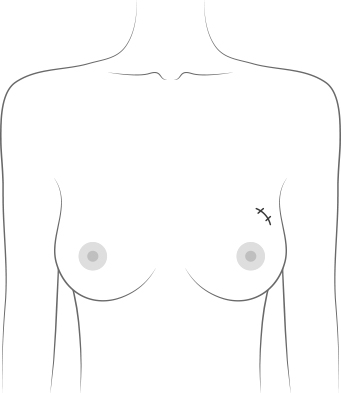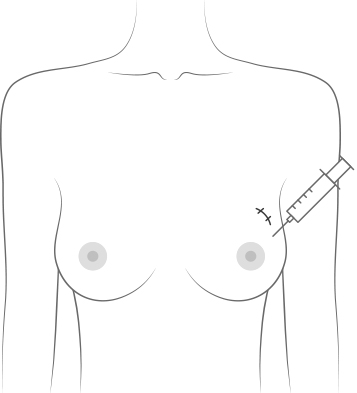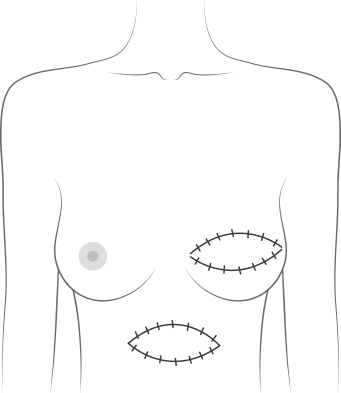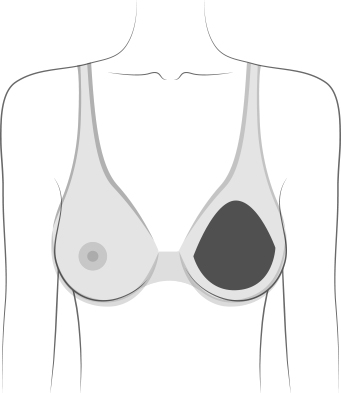By continuing to use our site, you consent to the processing of cookies, user data (location information, type and version of the OS, the type and version of the browser, the type of device and the resolution of its screen, the source of where the user came from, from which site or for what advertisement, language OS and Browser, which pages are opened and to which buttons the user presses, ip-address) for the purpose of site functioning, retargeting and statistical surveys and reviews. If you do not want your data to be processed, please leave the site.
The Voice of People With Breast Cancer
helping you understand your surgical options
SurgeryGuide
Jump to:
Lumpectomy (Breast Conserving Surgery)
If you choose to have a lumpectomy, there are several reconstruction options available to you; you may also decide not to have any reconstruction done. There is no standard reconstruction approach after a lumpectomy, the options depend on your previous treatments and what you hope to achieve with your reconstruction. Your plastic surgeon can provide details about options that may be appropriate for you. The following three procedures outlined below are the most common after a lumpectomy.
Options After a Lumpectomy
-
Lipofilling or Fat Grafting
Uses fat tissue from other parts of the body to fill in small dents left by a lumpectomy
- Usually fat from the abdomen or buttocks
- Beneficial because your own tissue is used so you are less likely to have a reaction or reject the tissue
- Reconstructed breast feels similar to an unreconstructed breast
- Thin women may need multiple donor sites for fat grafting, which is to consider
- May not be covered by public health care system, which may result in out of pocket expenses
-
Tissue Flap
Tissue flap is used from other parts of the body
- Usually from your abdomen, buttocks, back or thigh
- Used to fill in larger dent left from a lumpectomy
- Visit the autologous reconstruction section of this tool to find out more about the various tissue flaps that are used for breast reconstruction.
- Immediate Reconstruction or Oncoplastic Lumpectomy
-
Immediate reconstruction after a lumpectomy may be an option in your area. This is often referred to as oncoplastic lumpectomy or oncoplastic breast surgery. Oncoplastic lumpectomy combines lumpectomy with reconstruction to reshape the breast, reducing any noticeable indents that can be left behind from traditional lumpectomy surgery.
There are three levels of oncoplastic lumpectomy in Canada1:
Level 1: Level 1 procedures can be performed on individuals who require up to 15% of the breast tissue to be removed. It is a relatively simple procedure and may be more commonly performed by breast surgeons across Canada. Once the tumour and margins have been removed, the surgeon can reshape the breast using remaining tissue within the breast. With this procedure, surgeons can often strategically place the scar in a less noticeable area of the breast2.
Level 2: Level 2 procedures are more specialized and can be performed on individuals requiring 15-25% removal of their breast tissue. This procedure can combine removal of the tumour and surrounding margins with:
- Level 1 volume displacement and reshaping techniques
- Fat grafting or tissue flap techniques outlined above
- And more traditional plastic surgery techniques including a breast lift (mastopexy) or reduction (reduction mammoplasty)
Level 3: Level 3 procedures are, again, more specialized and are performed on individuals requiring 25-60% removal of breast tissue. These procedures use traditional reduction mammoplasty techniques to remove large amounts of breast tissue. They also include surgery on the other breast to maintain symmetry.
Additional considerations:
- While common in Europe, oncoplastic lumpectomy is still an emerging field in Canada. Level 1 procedures may be more accessible and are able to be performed by many general breast surgeons. Coverage, eligibility, and availability of level 2 or 3 procedures may be more difficult to acquire because they require more specialized training. Ask your surgeon if this procedure is an option in your area.
- Clips marking the original location of the cancer will be placed in the breast during all oncoplastic lumpectomies. These clips allow your healthcare team to know exactly where the cancer was and are visible during breast cancer screening3.
-
Partial Prosthesis
“I had a hard time feeling comfortable with something that wasn’t my own flesh filling up a gap that had been left by my lumpectomy. No matter how many bras I tried it in I just couldn’t get used to the weight and feel. I think now that part of that is that it was just too big. I now actually have a much smaller one and it is much better and feels more like me but I still don’t wear it all the time, sports bras fit me fine without it and are a big part of my daily wear.”
~Deborah~








